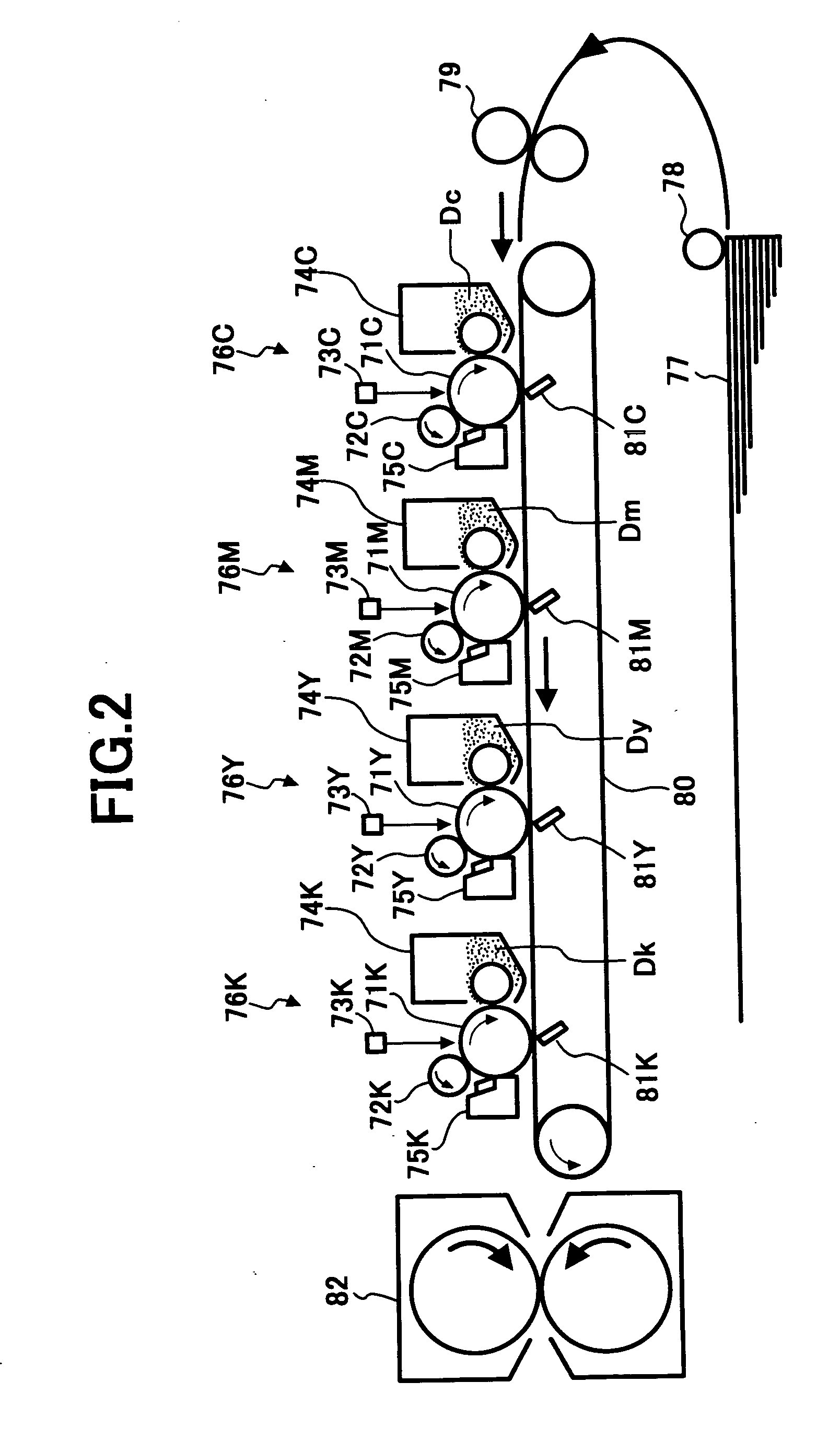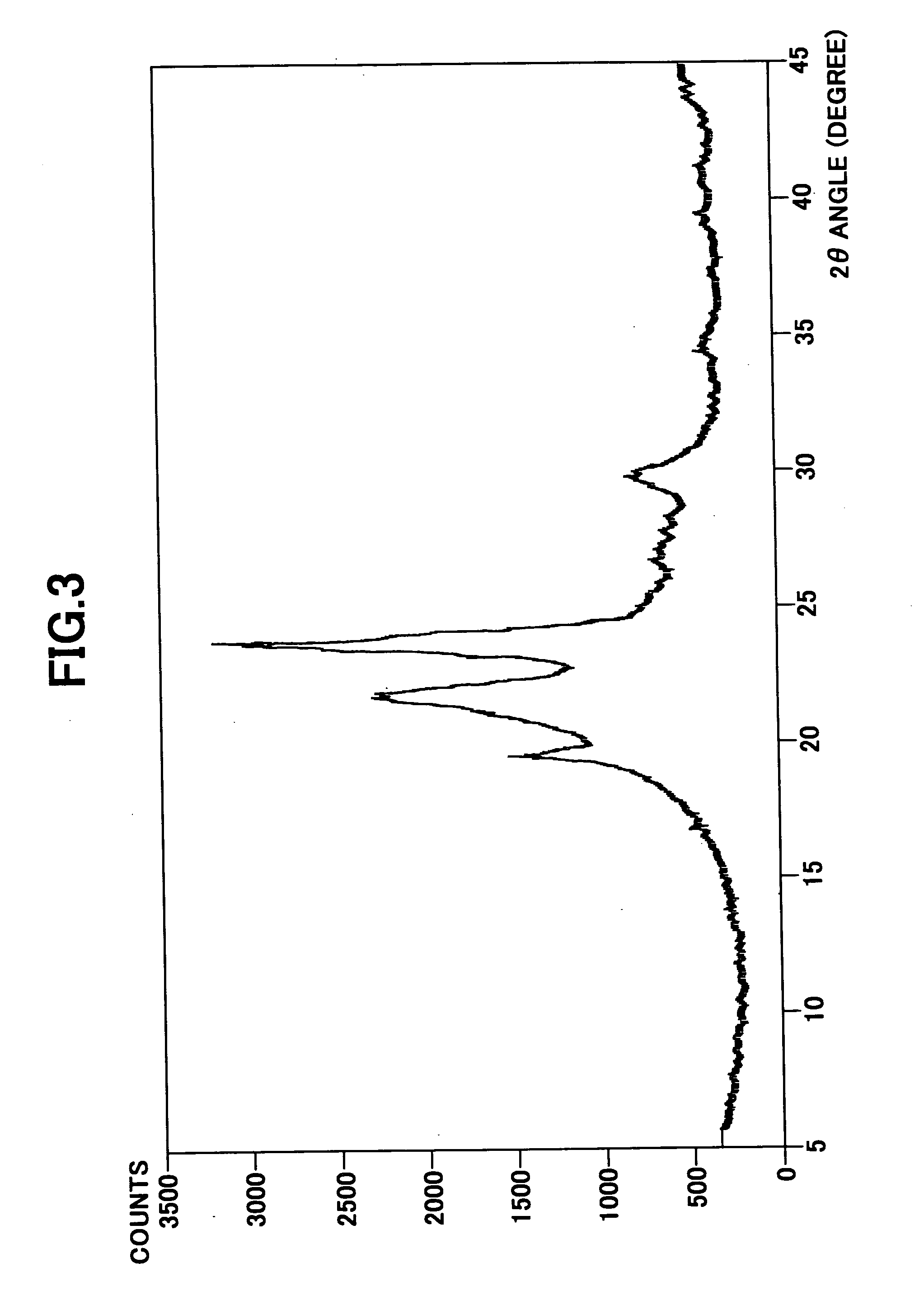Color toner for developing electrostatic images, toner container containing the color toner, and image forming method and apparatus using the color toner
a color toner and electrostatic image technology, which is applied in the direction of electrographic processes, electrographic processes using charge patterns, instruments, etc., can solve the problems of offset problems, increase in the size of the fixing device and the manufacturing cost of the fixing device, and deterioration of image qualities, etc., to achieve good low temperature fixability, good transferability, good durability
- Summary
- Abstract
- Description
- Claims
- Application Information
AI Technical Summary
Benefits of technology
Problems solved by technology
Method used
Image
Examples
example 1
[0183] The following components were mixed with a blender.
Polyester resin (A1)10Polyester resin (B1)70(content of THF-insoluble components: 0%, weight averagemolecular weight: 17,000, glass transition temperature:59° C., solubility parameter: 10.8)Styrene-methyl acrylate (C1)15(content of THF-insoluble components: 0%, weight averagemolecular weight: 15,000, glass transition temperature:62° C., solubility parameter: 9.3, pulverizability: betterthan those of polyester resin B1 and the below-mentionedpolyethylene wax)Polyethylene wax5(melting point: 99° C., penetration: 1.5 mm, solubilityparameter: 8.1)Charge controlling agent2(a metal salt of a salicylic acid derivative)Colorant (Copper phthalocyanine blue pigment)2.5
[0184] The resins A1, B1 and C1 are examples of the resins A, B and C in the present invention.
[0185] The mixture was fully kneaded with a two-axis extruder and then cooled. Then the kneaded mixture was pulverized and classified. Thus, a cyan mother toner having a volu...
example 2
[0232] The procedure for preparation and evaluation of the toner and developer in Example 1 was repeated except that the polyester resin (A1) was replaced with a polyester resin (A3) whose properties and composition are described in Table 1 (i.e., which is an example of the resin A in the present invention).
[0233] The maximum particle diameter of the resultant toner was 18 μm and the maximum long axis particle diameter of the wax included in the toner was 7 μm. In addition, when the cross section of the toner was observed with a transmission electron microscope, it was confirmed that the resin (C1) is dispersed like islands in the resin (B1), and the wax is included in the resin (C1).
example 3
[0234] The procedure for preparation and evaluation of the toner and developer in Example 1 was repeated except that the polyester resin (A1) was replaced with a polyester resin (A4) whose properties and composition are described in Table 1 (i.e., which is an example of the resin A in the present invention).
[0235] The maximum particle diameter of the resultant toner was 18 μm and the maximum long axis particle diameter of the wax included in the toner was 7 μm. In addition, when the cross section of the toner was observed with a transmission electron microscope, it was confirmed that the resin (C1) is dispersed like islands in the resin (B1), and the wax is included in the resin (C1).
PUM
| Property | Measurement | Unit |
|---|---|---|
| softening point | aaaaa | aaaaa |
| particle diameter | aaaaa | aaaaa |
| melting point | aaaaa | aaaaa |
Abstract
Description
Claims
Application Information
 Login to View More
Login to View More - R&D
- Intellectual Property
- Life Sciences
- Materials
- Tech Scout
- Unparalleled Data Quality
- Higher Quality Content
- 60% Fewer Hallucinations
Browse by: Latest US Patents, China's latest patents, Technical Efficacy Thesaurus, Application Domain, Technology Topic, Popular Technical Reports.
© 2025 PatSnap. All rights reserved.Legal|Privacy policy|Modern Slavery Act Transparency Statement|Sitemap|About US| Contact US: help@patsnap.com



